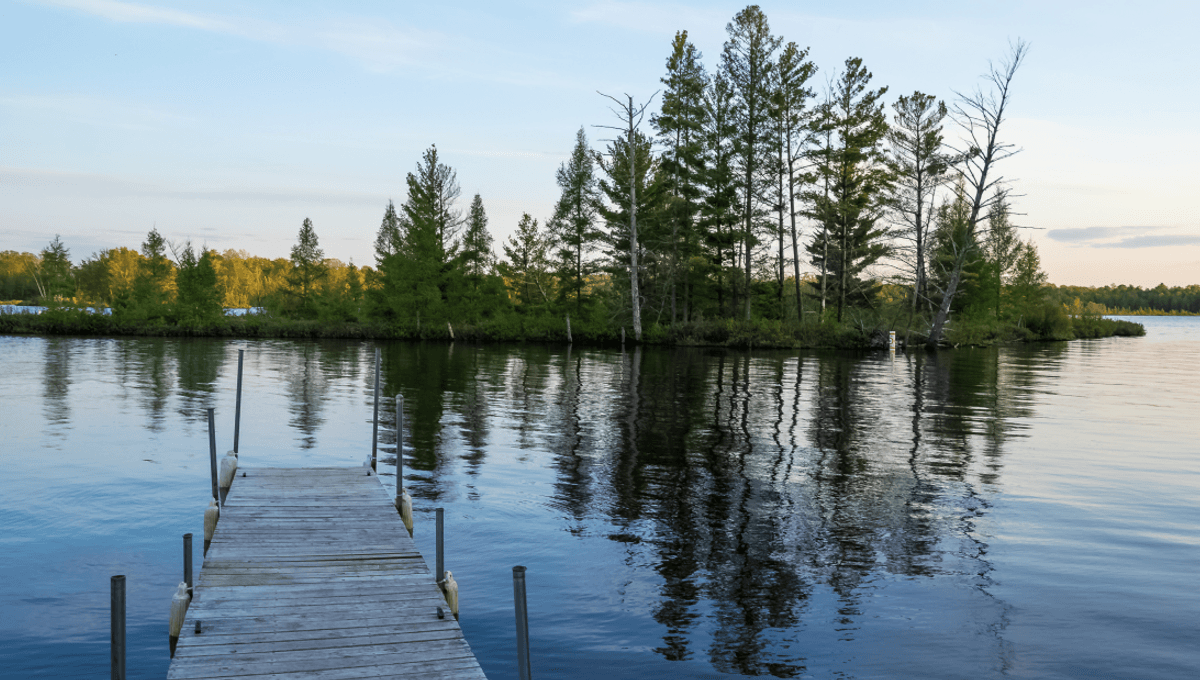
Floating islands sound like the stuff of Avatar – but for residents of Chippewa Flowage, Wisconsin, they can be a real pain in the butt. Here, a particularly large giant floating island causes problems almost every year as it drifts about, getting in the way, and it takes the work of over 20 boats to put it in its place.
The floating clump of mud and plant material is technically a bog, not an island, but it’s hefty enough to support the growth of trees all the same. Looking at it, you could easily believe it was a fully-fledged island. That is… until it starts drifting around.
“It’s one of the first things you look for when you come out here in the morning; where’s the bog?” Denny Reyes, owner of The Landing in Chippewa, told Arizona News.
The problematic bog is actually one of many, but it’s one of the biggest and close to a bridge that can get blocked when it goes for a wander. In 2022, with the wind on their side, it took around 25 boats to budge the bog and collectively push it back out into the lake.
Bog haters in Minnesota have suggested blowing up the floating islands to get rid of the problem. However, the big bog in Chippewa Flowage has been around for decades, and in that time a wealth of animal and plant species have made it their home. So, local wildlife authorities prefer they be dealt with in a way that won’t negatively impact wildlife.
Also known as tussocks, floatons, or suds, floating islands can be naturally occurring or artificially made. In the past, humans have created floating islands as a means of protection, such as the floating villages of Lake Titicaca that were created by the Indigenous Uros people to evade attacks from the Incas.
Chippewa Flowage was created in 1923 by flooding swamp land, but certain areas were revealed to be peat bogs when they floated to the surface. A combination of wind and birds facilitated the migration of grasses and trees to the floating bogs, and eventually, they took on a more flourishing, green aesthetic.
Some of the biggest floating bog islands in its history have broken apart into smaller islands before eventually disappearing. However, they can always be replaced by new ones.
“Although the Flowage was created 80 years ago, new bogs can be created anytime,” reads the Chippewa Flowage website. “A phenomenon known as Mud Bogs can appear at any time, although they show up most frequently in the fall. They will either rise to the surface temporarily and then slowly sink down to the bottom again, or they may stay permanently on the surface and eventually develop plants and trees.”
Now, who’s running the sweepstakes for when the next big bog will rise to glory?
Source Link: A Floating Bog Island Blocks A Bridge In Chippewa, So Locals Move It With Boats